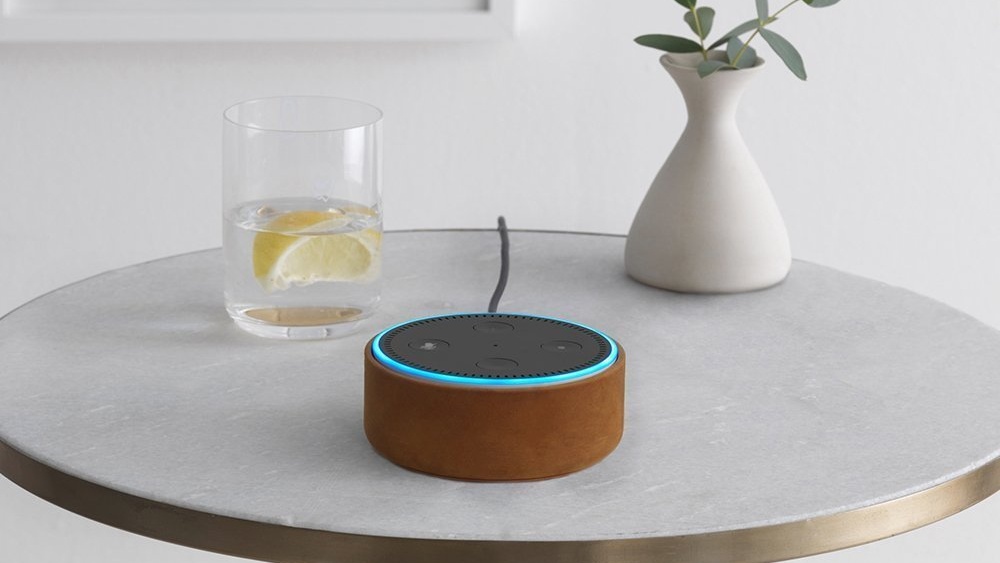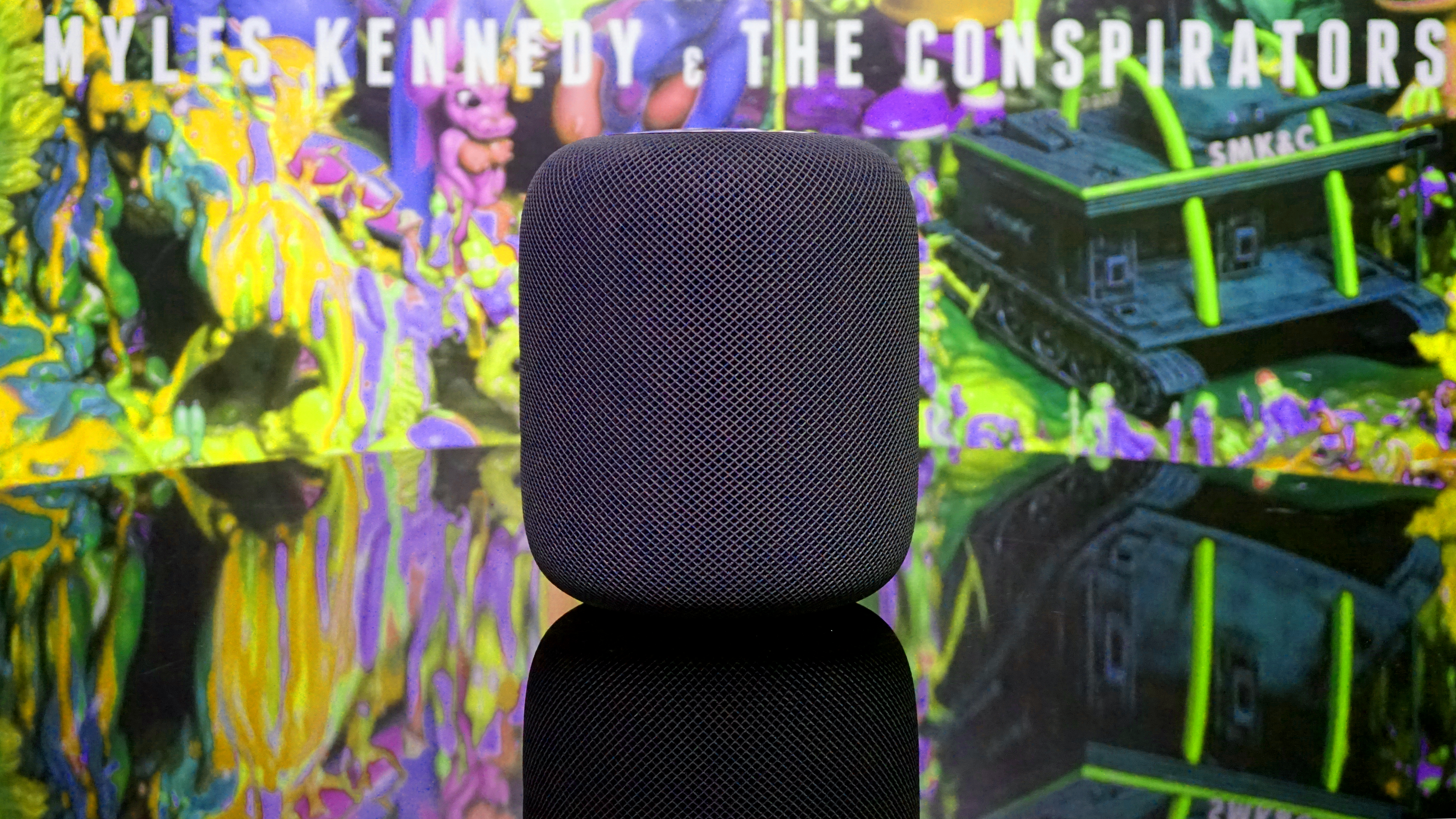Spotify Smart Speaker: what we want to see

Everyone seems to be making smart speakers these days. Rumours suggested Spotify would too, especially after we heard it was working on its own voice search interface. Y'know, like Amazon Echo or Google Home but just for music.
Spotify held a big launch event in April 2018 and we half-hoped the speaker would appear then. It didn't. We got a big upgrade to the free Spotify service instead, letting non-paying members curate their own playlists.
We're not giving up on the dream of a first-part smart Spotify speaker yet, though.
There are thousands of speakers out there that will play Spotify, using Spotify Connect, Bluetooth or a multi-room platform. But what could make a Spotify smart speaker stand out? Here’s what we’d like to see.
A multi-mic array
Amazon and Google have set the bar very high for voice recognition. Even their cheap smart speakers can hear you over music when you talk at normal conversational volume.
A Spotify smart speaker will need a clever multi-microphone array that can not only hear you from across the room, but be able to “cancel out” any music the speaker is currently playing.

The Echo Dot uses seven far-field microphones, with beamforming. This lets the mics listen in the direction of your voice, ignoring the sound from elsewhere in the room. As the Sonos One’s just OK voice pick-up shows, getting this right first time isn’t that easy.
Sign up for breaking news, reviews, opinion, top tech deals, and more.
A sweet deal on your Spotify sub
The best way to get people interested in a Spotify smart speaker is to bundle it in with an appealing Spotify subscription deal or discount. After all, in a year you’ll pay $120 or £120 just for a Spotify sub, which is already as much as many decent wireless or smart speakers.
If Spotify can get its marketing right and sell the speaker with 6-12 months of streaming, or offer a longer-term discount as part of the deal, a purchase may start to seem like a no-brainer.
BPM-based searches
Here’s a goal for the Spotify smart assistant rather than the smart speaker hardware itself: being able to make an insta-playlist based on the beats-per-minute of a song.

The most obvious use for this is during exercise. And not all of us have gyms at home. However, it would also be useful for parties or getting into "the zone" while working.
This should be an easy one to implement, as Spotify already offers playlists based on the beats-per-minute of songs.
Long throw driver or great passive radiators
Almost all smart speakers are relatively small. Even the Google Home Max is small by traditional hi-fi standards. That means they need to use clever technology to deliver as big and powerful a sound as possible.
For several years, the passive radiator was the most popular tool for wireless speaker makers. This is a tuned bass driver that is pulled back and forth by the movement of an active driver, which usually handles the treble and upper mid frequencies. It’s why tiny wireless speakers like the Bose SoundLink Mini II sound so bassy for their size.
If the Spotify Smart Speaker is to be much bigger than a Coke can, though, what we want is a long throw or long excursion woofer. These are drivers designed to move more than the norm, letting them create the long wavelengths of bass frequencies at the level of a larger driver.
A separate tweeter, or seven
If Spotify wants its Smart Speaker to get anywhere near to the sound quality of the Apple HomePod or Google Home Max, and we hope that’s the aim, it will also need separate tweeters.
These are tiny drivers responsible for treble frequencies. The Apple HomePod relies on these extensively, using seven of the things around its frame.

Why so many? It’s the only way Apple could get real 360-degree style sound with vital-sounding treble. Treble sound is far more positional than bass. You can tell where it’s coming from, so these seven small drivers paint the treble in this 360-degree sound image.
Does the Spotify Smart speaker need 360-degree sound? Perhaps not, but it will need two tweeters to provide a convincing stereo image. That’s what the Google Home Max has.
An OLED display for album art
Here’s an idea that really rests on the rest of the speaker’s design. How about an OLED screen to display album art and, potentially, even song lyrics?
All we need is a place on the speaker for the screen to live. Most larger smart speakers have fabric grilles on their fronts, which points towards the top as the obvious place to put a display.
Why OLED? A display like this can all-but disappear behind a black surface when not lit, as OLEDs have emissive pixels. If the display doesn’t look good, it shouldn’t be there.
A battery
None of the main smart speakers have a battery. It makes sense. The HomePod, Echo Plus and Google Home need Wi-Fi to work properly, so have to be used at home.
This is one area the Spotify Smart Speaker could set itself apart, though. Being able to take such a speaker into the garden or park in the summer would be a big bonus.
What we’d need, aside from a battery, is a portable “profile” in the speaker’s wireless infrastructure. When it’s out of Wi-Fi range it could either switch to Bluetooth like a standard wireless speaker, or use a form of Wi-Fi Direct to leech off your phone’s mobile data for streaming and voice recognition.
Wireless phone charging
Wireless phone charging has had many false starts over the years. However, now Apple’s on-board maybe it’s ready to become part of the standard consumer tech landscape.

Almost all phones that have wireless charging use a form of Qi, the most popular standard. Even Apple’s iPhone 8, iPhone 8 Plus and iPhone X.
One traditional problem with wireless charging is it’s slow. However, using the Qi 1.2 standard the max power transfer is actually 15W, higher than some wired chargers.
A Qi panel on the smart speaker’s top would be handy. Apple has spoilt this idea a bit, though. While the latest iPhones’ charge tech is based on Qi, Apple has tweaked it to come up with its own AirPower standard. Apple's loves proprietary tech.
Alexa or Google Assistant support
Part of the impetus behind Spotify’s move to make its own voice search is to do the job better than Google Home and Amazon Alexa. However, we hope that, with a bit of technical and political gymnastics, the speaker will be able to have Alexa or Google Assistant smarts too.
We don’t want Spotify to do a half-arsed job of making its own fully-featured smart home assistant. And we don’t want a smart speaker that won’t ever be able to control our smart home gear. Neither of these outcomes makes much sense.

Andrew is a freelance journalist and has been writing and editing for some of the UK's top tech and lifestyle publications including TrustedReviews, Stuff, T3, TechRadar, Lifehacker and others.